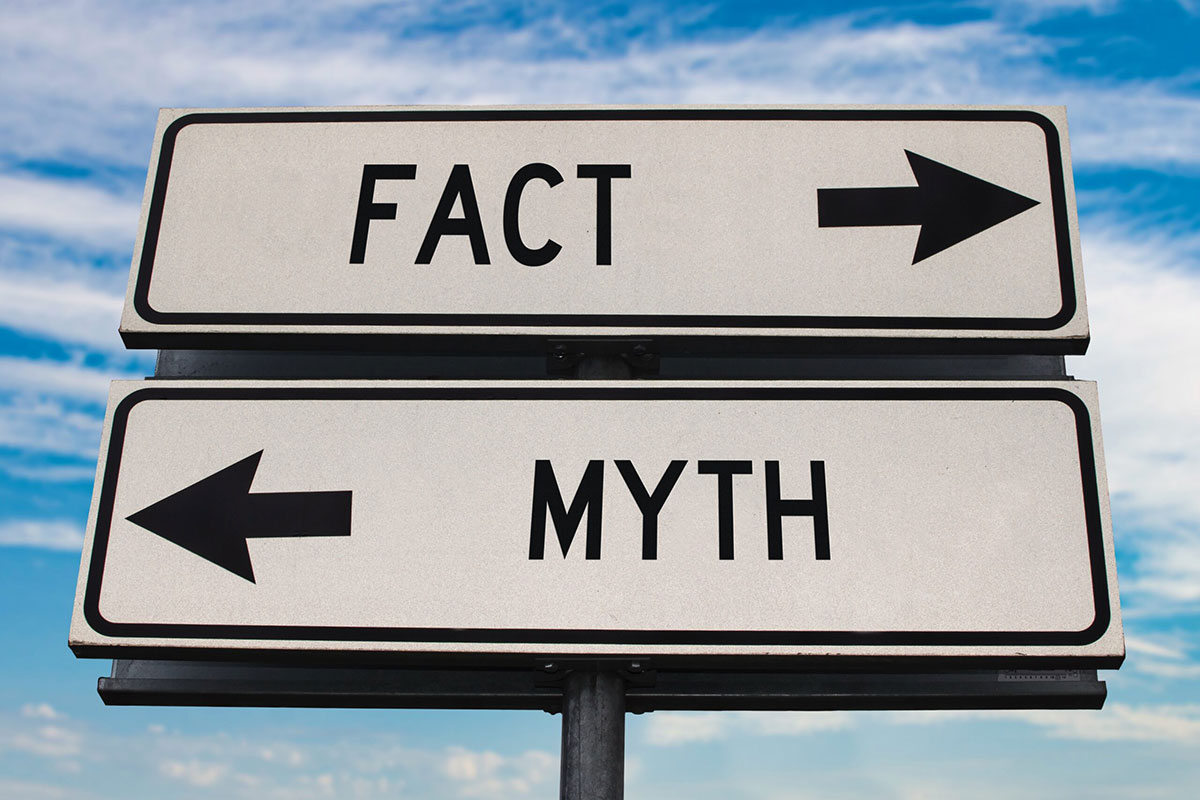Pornography is often blamed for causing, instigating, or inspiring violence in (especially) men against (mainly) women. However, studies used to demonstrate causation consistently fail to establish any direct links.
At most, studies show that those who may have violent or aggressive tendencies in real life prefer similar content in pornography, such as they might in mainstream movies or music —not that violent or aggressive pornography instigates real-world violence, or causes the development of violent tendencies.1 Overall, there is a significant lack of good practice research that justifies the idea that porn causes violence.2 On the contrary, numerous studies indicate that pornography consumption has positive effects on users, including greater sexual satisfaction and exploration, improved understanding of self and sexual health, increased open-mindedness towards sexual minorities, and diminished sexual anxiety.
- Studies regarding real world violence or crime only show correlation, not causation. In fact, other studies and data show that violence and sex crimes decrease with access to adult content.
- Many studies that purport to show violence in porn use overly broad categorization of acts (including spanking and dirty talk) and language (e.g., “drill”) that most would not consider indicative of violence.
We looked at some of the most common claims and studies to understand the disconnect.
Myth 1: Porn Increases Sexual Aggression
“Defenders of pornography have argued for decades that pornography provides individuals prone to sexual violence with an outlet for their desires. Common sense, however, ought to inform us that even if viewing pornography has a cathartic effect for some, it can also arouse or “incite” others.” — National Center for Sexual Exploitation
Does viewing porn cause harmful and negative attitudes towards women?
No. At least not according to the research. While some studies show that those with sexually aggressive or violent tendencies are also consumers of porn, none have actually shown that porn has in any way influenced those attitudes, or that viewing such content leads to increased sexual aggression or misogyny. Studies found no correlation between watching pornographic videos and negative attitudes towards women or rape.3 4 This is further contraindicated by studies that show people who porn viewers tend to have more egalitarian beliefs and greater positive attitudes towards women.5 In fact, studies found that viewers of pornography specifically had more egalitarian attitudes toward women occupying positions of power and women working outside the home than nonusers. However, there was no difference between porn users and nonusers in their view on traditional family roles or their own self-identification as a feminist.6
Myth 2: Porn Leads to an Increase in Sex Crimes
“Pornography fuels sexual violence. In a society in which male violence against women and girls is rampant, combatting the harms of pornography should be front and centre of policy and strategy against sexual violence … It’s now high time that Government acted and recognised the damage caused by the pornography industry to the lives and the safety of women. — Dame Diana Johnson, Pornography Regulation: The Case for Parliamentary Reform (2023)
Does porn viewership lead to an increase of committing sex crimes?
No. Porn has not been shown to correlate with an increase in sex crimes, and in some cases actually correlated with a decrease in sex crimes. A scientific review of research found that as pornography has become more available, sex crimes have either decreased or not changed.7 In fact, as porn viewership and access to porn online has increased, the rate of rape per population has actually decreased.8
Many studies find correlations between sex crime offenders and viewership of more pornography, but there is little evidence that viewing violent porn actually causes sex crimes. An oft-cited study from the 1980s focused specifically on sex offenders and found that they watched higher rates of violent pornography, but was not able to establish that viewing such content resulted in more crime.9
- Research does not currently suggest that watching consensual sex acts could lead to committing non-consensual behavior in real life.10
- People’s preference of porn is not indicative of the type of sex or sexual acts they enjoy in real life and there are marked differences in one’s sexual preference between in-person sexual behavior, fantasy, and porn.11
Myth 3: Online Porn is Full of Violence
“One team of researchers with the same question analyzed hundreds of the most popular porn scenes and found that 88.2% contained physical violence or aggression while 48.7% contained verbal aggression.” — Fight the New Drug
Is online porn full of violence?
No. While numerous studies have attempted to show that online porn is predominantly or excessively violent, they only achieve those headline numbers by coding common terms (“drill”) and activities (spanking, dirty talk) as indicators of violence. Further, they fail to differentiate between consensual activities and actual violence. Many of these allegedly aggressive acts fall under the category of BDSM, which can actually be utilized to heal sexual trauma and promote sexual empowerment. 12 13 14
For example, one study found 88.2% of scenes analyzed contained “physical aggression” and 48.7% contained “verbal aggression” both of which were defined with actions commonly engaged in, or were consensual kink and/or BDSM activities such as spanking hair pulling, bondage, and name calling. Researchers cite concern that 95.1% of the scenes showed recipients of these behaviors to be pleasurable or neutral, but the number just as easily indicates that the activity was consensual and pleasurable.15
In a 2021 study in the Journal of Criminology, researchers claimed to find that 12% of videos featured keywords suggesting sexual violence. But the study coded common words such as “rough,” “drill,” “pound” and “stepmother.”16
In both studies, keywords that describe (“rape” “assault” “punch”) or content that purport to show actual, non-consensual violence were next to non-existent.
Policy suggestions
Pornography is often used as a scapegoat for sexism and sexual violence, or as a pretext for censorship of sexual health or education. If we truly want to stop sexual assault and violence, there are actually effective methods of prevention.
- Education about the consent, parameter setting, and after-care present in more aggressive sexual behaviors17
- Encourage the inclusion of pleasure, self-exploration, and consent instead of just risk avoidance or abstinence-only education in state legislation18 19
- Fund efforts that center media and porn literacy education20
- Limit censorship of online and print materials that offer medically-accurate or controversial information about sexual health, bodily autonomy, and consent21
See also:
How Common is Violence Against Women in Porn? (Psychology Today)
What Have We Learned from 50 Years of Studying Porn (The Guardian)
Study: Porn Doesn’t Lead to Violent Sex Crimes (University of Texas)
Evidence Mounts: More Porn, Less Sexual Assault (Psychology Today)
The Sunny Side of Smut (Scientific American)
1. Gormezano, Aki M., Emily A. Harris, Stephanie E.M. Gauvin, Jude Pinto, Greg van Anders and Sari M. van Anders. “Sexual Orientation Across Porn Use, Sexual Fantasy, and In-Person Sexuality: Visualizing Branchedness and Coincidence via Sexual Configurations Theory.” Arch Sex Behav, no. 51 (2022): 1201-1219. doi:10.1007/s10508-021-02202-6
2. Ferguson, Christopher J. and Hartley, Richard D. “Pornography and Sexual Aggression: Can Meta-Analysis Find a Link?” Trauma, Violence, & Abuse, no. 23 (2022): 278-287. https://doi.org/10.1177/1524838020942754
3. Davies, Kimberly A. “Voluntary exposure to pornography and men’s attitudes toward feminism and rape.” The Journal of Sex Research, no. 34 (1997): 131-137, DOI: 10.1080/00224499709551877
4. Mckee, A. “The Relationship Between Attitudes Towards Women, Consumption of Pornography, and Other Demographic Variables in a Survey of 1,023 Consumers of Pornography.” International Journal of Sexual Health, no. 19 (2007): 31-45. DOI:10.1300/J514v19n01_05
5. Padgett, Vernon R., Jo Ann Brislin‐Slütz & James A. Neal. (1989) Pornography, erotica, and attitudes toward women: The effects of repeated exposure, The Journal of Sex Research, 26:4, 479-491, DOI: 10.1080/00224498909551529
6. Kohut, Taylor, Jodie L. Baer and Brendan Watts. “Is Pornography Really about “Making Hate to Women? Pornography Users Hold More Gender Egalitarian Attitudes Than Nonusers in a Representative American Sample.” The Journal of Sex Research, no. 53 (2015): 1-11. DOI: 10.1080/00224499.2015.1023427
7. Diamond, Milton. “Pornography, public acceptance and sex related crime: A review.” International Journal of Law and Psychiatry, no. 32 (2009): 304-314, https://doi.org/10.1016/j.ijlp.2009.06.004.
8. Fisher, William A., Taylor Kohut, Lisha A. Di Gioacchino and Paul Fedoroff. “Pornography, sex crime, and paraphilia.” Current psychiatry reports, no. 15 (2013): 362. doi:10.1007/s11920-013-0362-7
9 Marshall, W. L. “Use of Sexually Explicit Stimuli by Rapists, Child Molesters, and Nonoffenders” Journal of Sex Research, no. 25 (1988): 267-288
10 McKee, A. “Methodological Issues in Defining Aggression for Content Analyses of Sexually Explicit Material.” Arch Sex Behav, no. 44 (2015): 81–87. https://doi.org/10.1007/s10508-013-0253-3
11. Gormezano, Aki M., Emily A. Harris, Stephanie E.M. Gauvin, Jude Pinto, Greg van Anders and Sari M. van Anders. “Sexual Orientation Across Porn Use, Sexual Fantasy, and In-Person Sexuality: Visualizing Branchedness and Coincidence via Sexual Configurations Theory.” Arch Sex Behav, no. 51 (2022): 1201-1219. doi:10.1007/s10508-021-02202-6
12. McKee, A. “Methodological Issues in Defining Aggression for Content Analyses of Sexually Explicit Material.” Arch Sex Behav, no. 44 (2015): 81–87. https://doi.org/10.1007/s10508-013-0253-3
13. Cascalheira, Cory J., Ellen E. Ijebor, Yelena Salkowitz, Tracie L. Hitter & Allison Boyce “Curative kink: survivors of early abuse transform trauma through BDSM.” Sexual and Relationship Therapy, no. 38 (2021): 353-383, DOI: 10.1080/14681994.2021.1937599
14. Thomas, Jeremy N. “BDSM as trauma play: An autoethnographic investigation.” Sexualities, no. 23 (2020): 917-933. https://doi.org/10.1177/1363460719861800
15. Bridges, Ana J., Robert Wosnitzer, Erica Scharrer, Chyng Sun and Rachael Liberman. “Aggression and sexual behavior in best-selling pornography videos: a content analysis update.” Violence against women, no. 16 (2010): 1065-85. doi:10.1177/1077801210382866
16. Vera-Gray, Fiona, Clare McGlynn, Ibad Kureshi and Kate Butterby. “Sexual violence as a sexual script in mainstream online pornography.” The British Journal of Criminology, no. 61 (2021): 1243–1260. https://doi.org/10.1093/bjc/azab035
17. Dunkley, Cara R., & Brotto, Lori A. “The Role of Consent in the Context of BDSM.” Sexual abuse: a journal of research and treatment, no. 32 (2020): 657-678. doi:10.1177/1079063219842847
18. SEICUS and Columbia Mailman School of Public Health. “Sex education as sexual assault prevention.” SEICUS: Sex Ed for Social Change. (2020). https://siecus.org/wp-content/uploads/2020/08/If-Then-Sexual-Assault-Final.pdf
19. Patterson, Susanna P., Shona Hilton, Paul Flowers and Lisa M. McDaid. “What are the barriers and challenges faced by adolescents when searching for sexual health information on the internet? Implications for policy and practice from a qualitative study.” Sexually Transmitted Infections, no. 90 (2019): 462-467.
20. Rothman, Emily F., Avanti Adhia, Tiffany T. Christensen, Jennifer Paruk, Jessica Alder and Nicole Daley. “A Pornography Literacy Class for Youth: Results of a Feasibility and Efficacy Pilot Study.” American Journal of Sexuality Education, no.13 (2018): 1-17. DOI: 10.1080/15546128.2018.1437100
21. Wartella, Ellen, Vicky Rideout, Heather Montague, Leanna Beaudoin-Ryan and Alexis Lauricella. “Teens, Health and Technology: A National Survey.” Adolescents in the Digital Age: Effects on Health and Development, no. 4 (2016). https://doi.org/10.17645/mac.v4i3.515
Let us know how you’re using the information. Just drop us a note at [email protected] and share your experience.
P.S. Don’t forget to credit Fact Checked by Woodhull when citing this work.

